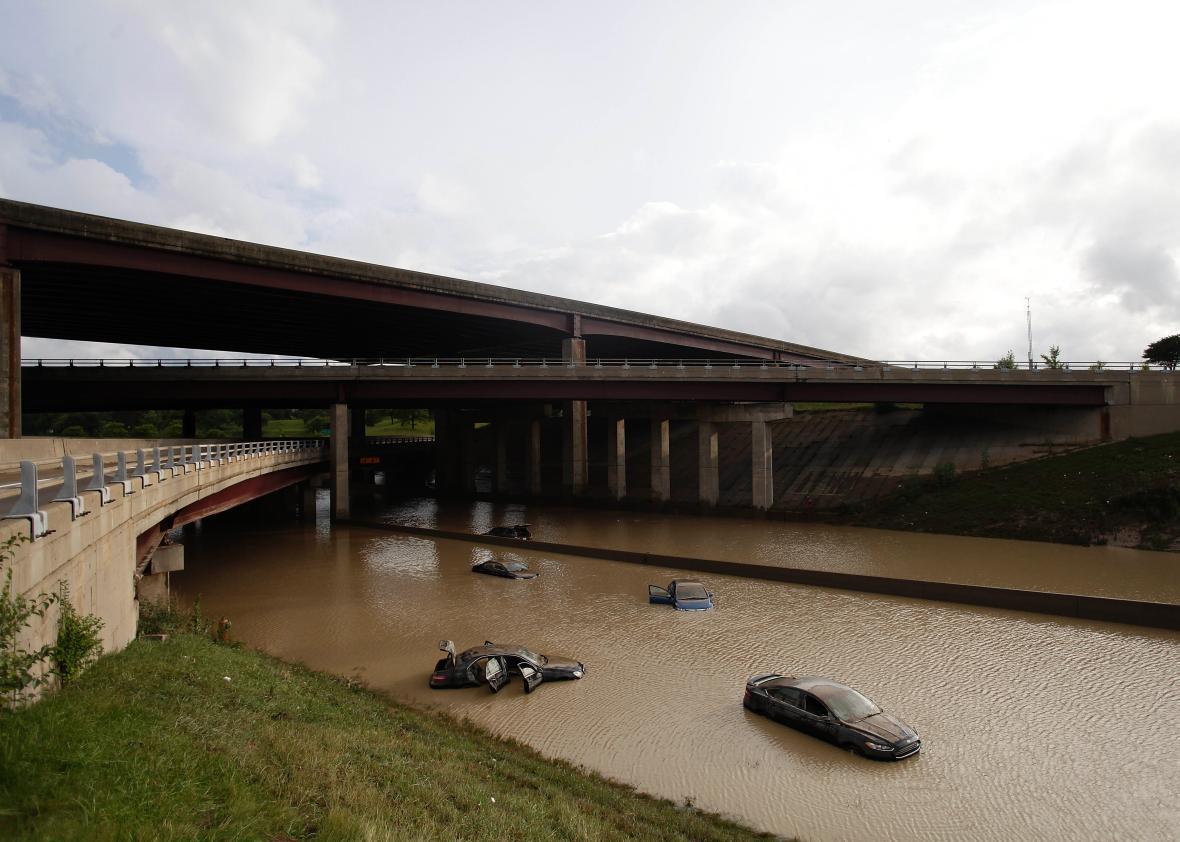In a press release from Oct. 17, Trump pledged to “drain the swamp in Washington, D.C.” He then tweeted: “I will Make Our Government Honest Again — believe me. But first, I’m going to have to #DrainTheSwamp.” Since then, Trump and his supporters have punctuated tweet after tweet with the hashtag. What are they talking about?
Politicians have long colored calls to clean up government corruption with drain the swamp. In 2006, newly elected Speaker of the House Nancy Pelosi pledged to “drain the swamp” in Congress after 10 years of Republican control. After 9/11, Defense Secretary Donald Rumsfeld committed to “drain the swamp” of terrorism; the phrase was a favorite of Bush administration officials during the ensuing wars they launched in the Middle East. Earlier, in 1983, President Reagan described his chief mission as “draining the swamp” of big government.
At its bottom, drain the swamp is a metaphor: If you drain the swamp, you eliminate the mosquitoes (or snakes and alligators, in other iterations) that breed disease. But, ironically, the original disease the expression referred to was the very thing Trump has built his campaign on: big business. Etymologist Barry Popik has traced drain the swamp back to the socialist movement of the early 20th century. In a 1903 letter to the Daily Northwestern, Winfield R. Gaylord, state organizer of the Social Democratic Party, precursor to Eugene Debs’ Socialist Party of America, wrote: “Socialists are not satisfied with killing a few of the mosquitoes which come from the capittalist [sic] swamp; they want to drain the swamp.” Another Wisconsin socialist, Victor Berger, provides a textbook example in 1912: “It cannot be avoided any more than malaria in a swampy country. And the [financial] speculators are the mosquitos. We should have to drain the swamp—change the capitalist system—if we want to get rid of those mosquitos.” The following year, labor and community organizer Mary “Mother Jones” Harris (and magazine namesake) deployed the phrase: “The capitalist and striker—both men are all right—only they are sick; they need a remedy; they have been mosquito bitten. Let’s kill the virulent mosquito and then find and drain the swamp in which he breeds.” The mosquitoes, for Harris, were the deeper, industrial forces that pit labor against bosses.
Drain the swamp isn’t just a vivid conceit with a revolutionary flair: It also alludes to the stubborn myth that Washington, D.C., was built on a swamp, which, fatefully, had to be drained to accommodate the new seat of American democracy and power. As historians and scientists have noted, only a tiny fraction of the District, for all its humidity, was ever swampy enough to require any such drainage; the ecosystem is actually closer to a tidal marsh. (Manage the tidal marsh, while perhaps better characterizing the day-to-day slog of government work, doesn’t have the same ring to it.) Myth aside, drain the swamp has proved sticky over the course of the 20th century, used by Democrats and Republicans, socialists and capitalists, to condemn whatever particular malady they believe is plaguing our government.
But leave it to Trump to drag this mucky metaphor even further into the mud. For Trump’s swamp isn’t just home to political cronies and crooks, whom the expression typically targets: The media, polling, leaders of his own political party, the abstract Establishment, and just about anything that challenges his view of the world, and himself, gets sucked into his vortex. A pro-Trump political cartoonist, Ben Garrison, illustrated some of the swamp things Trumpism wants to cleanse, from CNN rats to bloodthirsty globalism:
Notice, though, the #MAGA-capped amphibian in Garrison’s cartoon. It’s Pepe, a cartoon frog appropriated as a symbol of white supremacy and much memed in support of Trump’s candidacy. And frogs, well, live in swamps—not to mention that you can’t drain a swamp like you empty a bath. You have to build special ditches and canals that redirect the water. But knowing that would require doing a little bit of homework.
